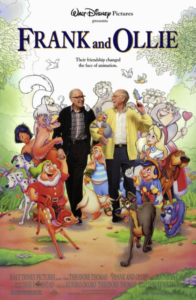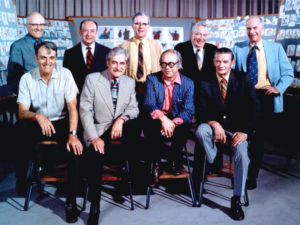The Twelve Principles of Animation originated in the pieces you see when you view Disney Art from Private Collections at the Arlington Museum of Art. These principles are found at the root of ALL motion-based media today,
The Twelve Principles of Animation were mastered in the 1930-40s by Disney artists Frank Thomas and Ollie Johnston as they were pioneering the animation techniques in films like Snow White and the Seven Dwarfs (1937), Pinocchio (1940), and Bambi (1942). The application of their principles quickly became the ultimate guide for creating appealing and realistic character animations.
While originally developed for pencil sketching, the same 12 principles also apply to digital animation. In fact, many of these foundational techniques are still taught in classrooms and utilized in film and design studios around the world today.
The Twelve Principles combine the basic laws of physics with their intended outcome: to create appealing characters that present relatable physical and emotional range.
The Twelve Principles of Animation
- Timing and Spacing: The number of frames between two poses, and how those individual frames are placed.
- Squash and Stretch: The flexibility of objects to exaggerate or add appeal to a movement.
- Anticipation: The setup for an action to happen.
- Ease In and Ease Out: The time for acceleration and deceleration of movement.
- Follow Through and Overlapping Action: The idea that separate parts of the body will continue moving after a character or object comes to a full stop, and the idea that parts of the body will move at different times.
- Arcs: The principle that smooths animation and moves action in a realistic way.
- Exaggeration: The pushing of movement further to add more appeal to an action.
- Solid Drawing: The accuracy of volume, weight, balance, and anatomy.
- Appeal: The relatability (or charisma) of a character.
- Straight Ahead Action and Pose to Pose: The spontaneous and linear approach to creating an action using many in-between poses along with the main poses, and the more methodical approach to creating an action using only a few poses.
- Secondary Action: The actions that emphasize or support the main action of the animation.
- Staging: The setting up of the scene, from placement of characters to the background and foreground elements, to how the camera angle is set up, the lighting and shadows, and more.
Want to learn more?
 The Illusion of Life: Disney Animation (1981)
The Illusion of Life: Disney Animation (1981)
The Twelve Principles of Animation are explored in detail by Ollie Johnston and Frank Thomas in their preeminent book, The Illusion of Life: Disney Animation.
![]()
Disney – The Magic of Animation
This YouTube video produced by kaptainkristian offers an excellent overview of the Twelve Principles of Animation as they have been applied in Disney animated films throughout the decades.

Frank and Ollie (1995)
 To learn more about Frank Thomas and Ollie Johnston, we highly recommend this documentary.
To learn more about Frank Thomas and Ollie Johnston, we highly recommend this documentary.
Before computer graphics and special effects, the magic of animation flowed from the pencils of two of the greatest Disney animators of all time — Frank Thomas and Ollie Johnston. It was their creative genius that helped make Walt Disney animation synonymous with brilliant artistry, magnificent music, and emotional storytelling.
Who were Walt Disney’s Nine Old Men?
Even Walt Disney himself probably didn’t foresee the global success his company would achieve. That triumph—both artistically and commercially—wouldn’t have happened without the talented and dedicated animators who put pencil to paper day after day.
Walt Disney’s dreams flourished thanks to the hard work of his original animators, later nicknamed the Nine Old Men. Click to read the full story in wdw-magazine.com; photo from the associated article.

Other source: Lesley University, The Twelve Principles of Animation
